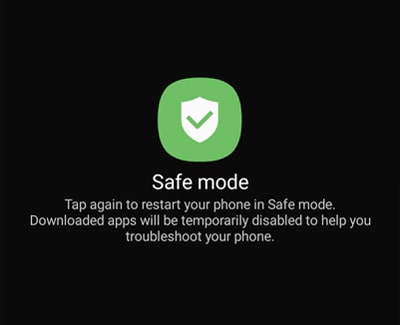How to stop your Galaxy phone or tablet from constant reboots

Third-party apps can cause random or constant reboots to happen on your Samsung phone or tablet. Follow these steps to troubleshoot this issue. You can perform a software update, factory reset, or turn on Safe mode to determine if an app is causing the issue.
Note: Information provided applies to devices sold in Canada. Available screens and settings may vary for smartphones or tablets sold in other countries.
- Make sure your Galaxy phone or tablet is connected to the internet and charged more than 50 percent before installing a software update.
- Some carriers require a Wi-Fi network connection and will not allow you to update using mobile data.
- If your phone or tablet does not have enough storage space, you can clean up your storage with Device care. You can also back up extra files using Smart Switch or your Samsung or Google account.
On your device, navigate to and open Settings. Swipe to and then tap Software update, or System updates. It will vary between models. Tap Download and install, or Check for system updates. If an update is available it will begin downloading, though you may need to tap Download now on some devices. When the download is complete follow the on-screen instructions to install the update.
Note: You can also check for updates using Smart Switch.
If you were having issues before the software update, use the phone or tablet normally to see if the problem has been solved.
Certain downloaded apps can make your phone or tablet freeze, crash, or lag. Some apps can even affect camera functionality, cause audio issues, and affect network connectivity.
Using Safe mode disables all downloaded apps and loads only the original software that came with your phone or tablet, allowing you to determine if the issue is caused by an app or with the phone or tablet. If the issues do not appear while in Safe mode, the problem is caused by a downloaded app, and it should be uninstalled.
First, open the Power menu:
- On devices with a regular Power key, press and hold the Power key until the Power menu is displayed.
- On devices without a dedicated power button, swipe down with two fingers from the top of the screen to open Quick settings. Tap the Power icon at the top of the screen.
Touch and hold Power off until the Safe mode icon is displayed.

Tap Safe mode to start your device in Safe mode. If you have entered Safe mode successfully, you will see Safe mode displayed at the bottom of the screen
Use the phone or tablet normally to see if the issue has been resolved.
- If the issue is gone in Safe mode: One of your recently downloaded apps was likely the cause of the problem. Proceed to Step 4.
- If the issue still exists: Downloaded apps may not be the cause of the problem. You may need to reset the phone or tablet to the factory setting.
One by one, uninstall any app you downloaded just before your phone or tablet began having the issue.
After uninstalling each app, restart the phone or tablet and check if it is functioning normally.
After you uninstall the app that caused the issue, you can reinstall the other safe apps you just deleted.
First, open the Power menu:
- On devices with a regular Power key, press and hold the Power key until the Power menu is displayed.
- On devices without a dedicated Power key, swipe down with two fingers from the top of the screen to open Quick settings. Tap the Power icon at the top of the screen.
Tap Power off to turn off the device. Wait until the phone or tablet completely turns off, and then press the Power key again to turn it on. See if the issue has been resolved.
- Make sure to back up your phone or tablet. All data and settings will be erased.
- Write down the username and password for the account that you used to back up your data.
- We recommend having your phone or tablet plugged into the wall charger during the reset process because it may take up to an hour.
- If you have encrypted the SD Card inserted in to your phone or tablet, make sure to decrypt it before the reset. Navigate to Settings, search for and select SD, and then tap Decrypt SD card.
Navigate to Settings. Search for and select Factory data reset. Tap Factory data reset again, and then tap Reset. Follow the on-screen prompts to complete the reset. You may need to enter your Samsung account password or Lock screen password. The phone or tablet will reboot.
Note: You may need your Samsung account password or Lock screen password when resetting your phone or tablet. All your data will be erased.
When the phone or tablet reboots, it will have its original factory settings. Now you will need to go through the initial setup to finish setting up the phone or tablet. The phone may require you to enter your Samsung or Google account information to complete the setup.
Note: If you are experiencing network service issues with calling, SMS or MMS messages, network signals, mobile data, or hotspots after resetting the device, you may need to contact your carrier.
Before installing any apps, make sure that your Galaxy phone or tablet is functioning normally.
If you are still encountering any issues, please visit a Samsung Service Centre or you can contact us.
Thank you for your feedback!
Please answer all questions.
The coding for Contact US > Call > View more function. And this text is only displayed on the editor page, please do not delet this component from Support Home. Thank you
